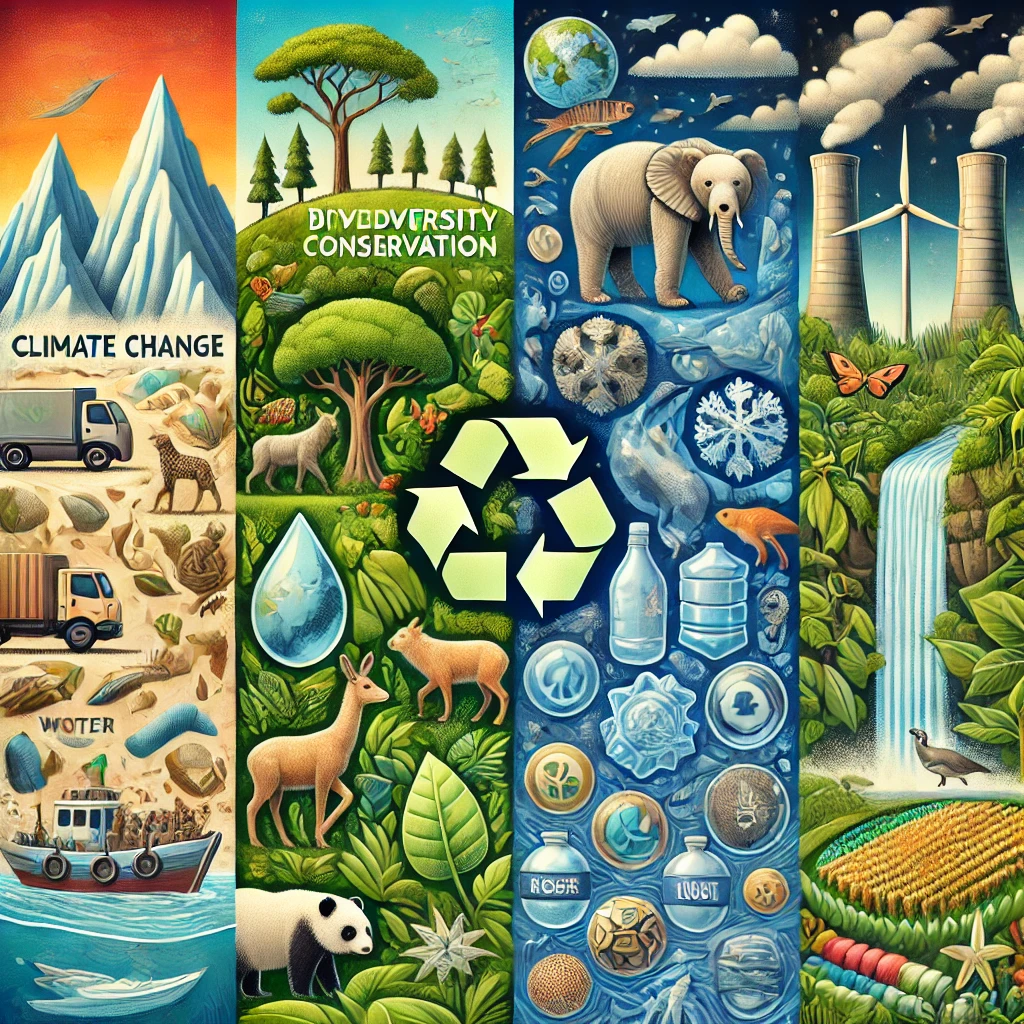Top 5 Problem needs to solve for Protecting Earth from Nisarg Desai's Idea / Prospect

Why It’s Critical: Climate change is accelerating, with 2023 marking one of the hottest years on record, and some regions are facing unprecedented heat waves, droughts, and natural disasters. If global temperatures rise by 2.7°C by the century’s end, we’ll experience catastrophic changes, from coastal cities going underwater to severe agricultural disruption.
Solutions Needed and Examples:
- Decarbonizing Energy Sources: The International Renewable Energy Agency (IRENA) notes that renewables could supply up to 86% of global electricity by 2050. Example: Denmark has committed to generating 100% of its electricity from renewables by 2030.
- Carbon Capture and Storage (CCS): CCS can capture up to 90% of CO₂ emissions from sources like power plants. Example: The Boundary Dam CCS Project in Canada captures 1 million tons of CO₂ annually.
- Energy Efficiency Measures: Energy efficiency improvements could halve energy demand growth. Example: Japan has adopted energy-efficient building codes and appliance standards that have cut down energy use significantly.
- Sustainable Land Use: Forest preservation is vital, as deforestation contributes around 10% of annual GHG emissions. Example: Costa Rica has reversed deforestation, doubling its forest cover while promoting eco-tourism and sustainable land use.
Why It’s Critical: The Earth is experiencing its sixth mass extinction, with species vanishing at a rate 100 to 1,000 times faster than normal due to human activity. This not only reduces ecosystem resilience but also affects our food systems, water sources, and the stability of natural cycles.
Solutions Needed and Examples:
- Protected Natural Habitats: Protecting natural areas helps maintain biodiversity and prevent species loss. Example: The Amazon Rainforest hosts 10% of known species; countries like Brazil have created protected areas, although illegal deforestation remains a challenge.
- Restoration Projects: Restoration initiatives help recover damaged ecosystems. Example: China’s "Great Green Wall" reforestation project has planted over 66 billion trees, aimed at reversing desertification.
- Wildlife Corridors: Corridors allow species to migrate safely between habitats, which is crucial for genetic diversity. Example: The Yellowstone to Yukon (Y2Y) initiative protects migration corridors for large mammals across Canada and the U.S.
- Reducing Wildlife Exploitation: Curbing the wildlife trade and hunting can protect endangered species. Example: Kenya’s strict anti-poaching laws have reduced the poaching of elephants and rhinos, helping populations stabilize.
Why It’s Critical: Freshwater scarcity is already a reality for over 2 billion people, and climate change worsens the situation with increased droughts and extreme weather events. Without sustainable management, water shortages could lead to food crises and geopolitical conflict.
Solutions Needed and Examples:
- Improving Water Efficiency: Improving irrigation efficiency in agriculture can reduce water use by up to 30%. Example: Israel’s drip irrigation technology has revolutionized agriculture, reducing water use while boosting crop yields.
- Protecting Water Bodies: Protecting rivers, lakes, and groundwater from pollution is crucial for clean water supplies. Example: The Ganges River Cleanup in India addresses industrial waste and sewage, critical for millions dependent on the river.
- Desalination and Recycling Innovations: Desalination and recycling offer alternative water solutions. Example: Singapore’s NEWater system recycles wastewater, meeting 40% of the nation’s water needs.
- Integrated Water Resource Management (IWRM): Managing water resources collaboratively across regions ensures sustainable use. Example: The Mekong River Commission coordinates sustainable water usage among Southeast Asian countries sharing the river.
Why It’s Critical: Pollution from waste, particularly plastic, is devastating our oceans and land, with plastics taking centuries to decompose. Toxic waste from electronics and industry is also a major health hazard. If current trends continue, there could be more plastic in the ocean than fish by 2050.
Solutions Needed and Examples:
- Reducing Plastic Use: Reducing single-use plastic can prevent it from polluting oceans and harming marine life. Example: Rwanda banned plastic bags in 2008 and became one of the cleanest countries in Africa.
- Waste-to-Energy and Recycling Infrastructure: Efficient waste management systems reduce landfill use and recover valuable materials. Example: Sweden’s waste-to-energy plants convert almost 99% of household waste into energy.
- Toxic Waste Regulation: Enforcing stricter industrial regulations can prevent harmful chemicals from polluting ecosystems. Example: The European Union’s REACH regulation ensures strict monitoring of chemical usage.
- Consumer Awareness Campaigns: Educating people about sustainable practices can reduce waste and pollution. Example: South Korea’s recycling programs are highly effective, with citizens participating actively due to government-led education campaigns.
Why It’s Critical: Current agricultural practices are a major driver of environmental degradation, from deforestation to excessive water use and pollution. Agriculture accounts for 10-12% of global GHG emissions and is a leading cause of habitat loss and soil degradation. Without sustainable methods, food production systems could collapse under population pressure and climate impacts.
Solutions Needed and Examples:
- Regenerative Agriculture: Regenerative practices can enrich soil, reduce carbon emissions, and improve biodiversity. Example: The Rodale Institute in the U.S. promotes regenerative agriculture, showing it can increase yields while lowering environmental impact.
- Reducing Food Waste: Up to 30% of food is wasted globally, contributing to 8-10% of GHG emissions. Example: France implemented strict policies against food waste, including requiring supermarkets to donate unsold food to charities.
- Alternative Proteins and Vertical Farming: Reducing reliance on livestock by adopting alternative proteins and efficient farming methods can cut emissions and land use. Example: Singapore has invested heavily in vertical farms, producing fresh vegetables locally with minimal land.
- Agroforestry and Mixed Cropping: Integrating trees and diverse crops enriches soil, conserves water, and protects biodiversity. Example: In Kenya, agroforestry practices, like planting trees with crops, improve yields and provide firewood without harming forests.
Addressing these urgent environmental problems requires commitment at every level—from individuals to governments and corporations. Each solution example shows the impact these measures can have if they are implemented broadly, proving that a sustainable future is achievable with immediate, coordinated action.

The Wall